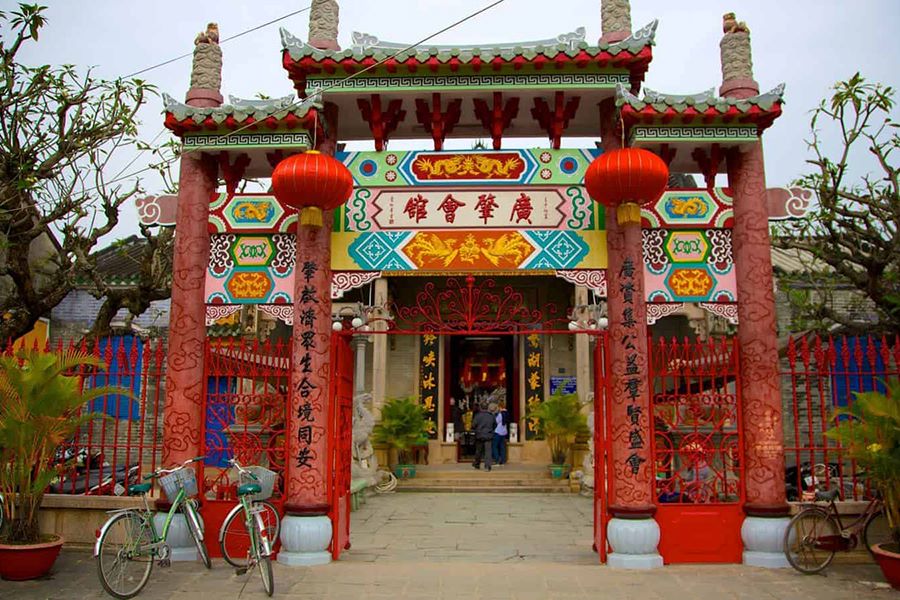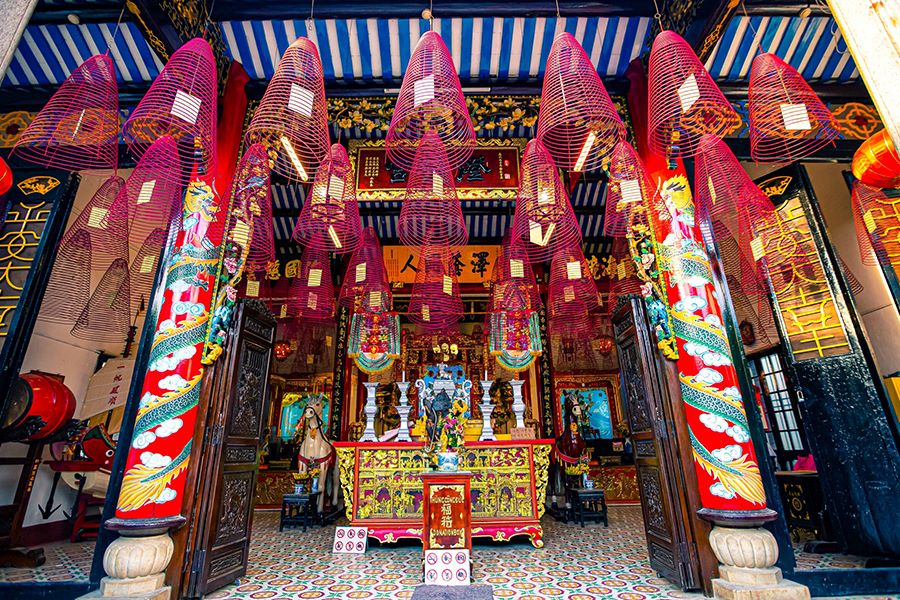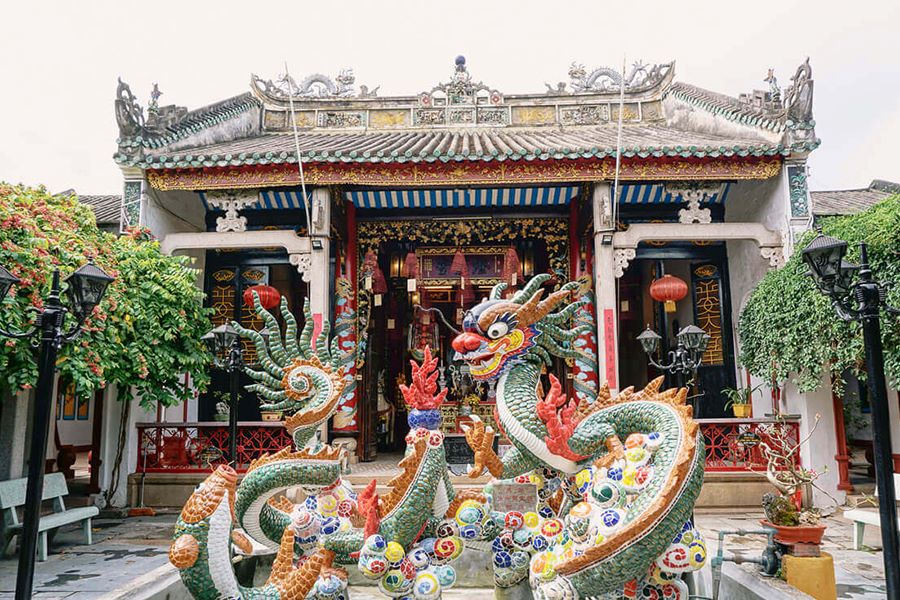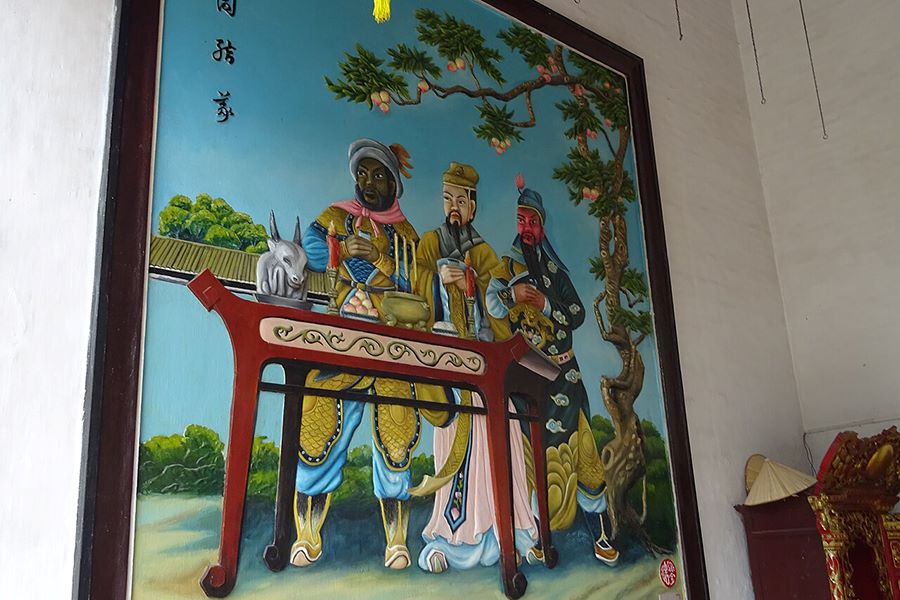Cantonese Assembly Hall is a historically significant relic of Hoi An Ancient Town. With its Chinese architectural style, this is a popular destination for travelers to visit and explore with Vietnam DMC in India. Cantonese Assembly Hall is a special religious place for the Chinese people who initially settled in Hoi An. Up to now, it ranks at the top of the most famous feudal structures in the ancient town. Therefore, if you are planning to visit Hoi An, don’t miss this one-of-a-kind attraction.
Cantonese Assembly Hall in Hoi An
Location of Cantonese Assembly Hall
Cantonese Assembly Hall (Hoi Quan Quang Dong in Vietnamese) is located on Tran Phu Street which is home to many unique architectural works of great historical value. Conveniently located near the Japanese Covered Bridge (Chua Cau), this style-mingled assembly hall welcomes flocks of visitors on a daily basis, adding a dash of color to the multicolored Hoi An.
A long history of the Assembly Hall of Cantonese
The Assembly Hall of the Cantonese Chinese Congregation was built by overseas Chinese from the Guangdong – Guangzhou region in the late 18th century (often cited as 1885). Originally, Cantonese Assembly Hall Hoi An was used to worship the Mazu goddess (Thien Hau Thanh Mau) and Confucius. Since 1911, however, it has been switched to honor Guan Yu and other respectable figures in history.
In addition to being dedicated to spiritual beliefs, this assembly hall was the place where the Cantonese community held periodic gatherings to assist each other in business and daily activities.
Today, the Cantonese Assembly Hall is also known by other names as Ong Pagoda, or Guangzhao Assembly Hall (Hoi Quan Quang Trieu in Vietnamese).
Highlights of the Assembly Hall of Cantonese
Design of Cantonese Assembly Hall
This hall had a fascinating construction procedure because each component was made in China, then transported by boat to Hoi An and assembled all together.
Cantonese Assembly Hall was made primarily of stone and wood in the shape of 囯 (meaning “nation”). It’s a closed campus with a three-door gate entrance, a large garden with bonsai trees, a communal temple, a main hall, and a backyard; a common feature found in every assembly hall in Hoi An.
The public campus: Once reaching this assembly hall, visitors will see a three-door gate overlooking Tran Phu Street. The gate is built of stone and is beautifully carved with mascots such as dragons, phoenixes, unicorns, and other mythical creatures. Contemplating these eye-catching pictures, visitors cannot stop admiring the skills of artisans dating back hundreds of years before.
Stepping inside, visitors will notice a fountain in the center of the courtyard. It is adorned with a magnificent dragon statue that represents the legend of “Carp jumping over the dragon gate.” On the Eastern and Western sides, you will find two rows of buildings that connect the main hall with the communal temple in front. Here you will be surprised by the amazing artwork on the surrounding walls.
The main hall is extremely large and is divided into 3 altars. The center is where Guan Yu and his mythical mount, the Red Hare, are worshiped. The God of Earth (Phuoc Duc Chanh Than) and the God of Wealth (Tai Bach Tinh Quan) are worshiped on the two remaining altars.
The backyard: is located behind the main hall and is accessible to visitors via the main hall’s side path. Here you can see a very large portrait of Guan Yu hanging on the wall and a fountain carved with exquisite dragons.
Priceless antiques in Cantonese Assembly Hall: Up to now, Cantonese Assembly Hall still retains many ancient artifacts that are of high value such as four large horizontal lacquered boards, a pair of Chinese celadon porcelain pedestals, a 1.6-meter-high copper censer, and various pictures reflecting the Guangdong community’s daily life.
These artifacts will give visitors an insight into the history of the Chinese community in the early times when they entered Hoi An. It is also an opportunity for travelers to learn more about cultural clashes between Vietnam and China.
Traditional festivals in the Cantonese Assembly Hall
If you want to dig deeply into the cultural life of the locals at Cantonese Assembly Hall, partaking in its annual festivals is an unmissable experience. The festivals are commonly held to honor legendary figures, while also strengthening community bonds and maintaining traditional culture.
In particular, the Lantern Festival takes place on the 15th of the first month of the Lunar Year. People hold this festival to pray for a new year of health, fortune, and wealth, attracting a large number of travelers from all over the world.
Another big festival you can participate in is the Guan Yu Birthday Festival which is held on the 24th of the sixth Lunar Month. This is an occasion for people to pay homage to the talented General.
Notes for visitors to Cantonese Assembly Hall Hoi An in Vietnam
To have a complete experience at Cantonese Assembly Hall, you should take notes of the following:
- Dress appropriately when entering the hall
- Avoid making noise or running to pay respect to the deities
- Avoid smoking, chewing gum, and touching precious artifacts
- Visit the assembly hall from 9 AM to 2 PM to avoid crowds
- Ask the tour guides in the hall to understand more about its history and architecture
- Visit other attractions near the Cantonese Assembly Hall: Quan Cong Temple, Phuc Kien Assembly Hall, Tan Ky Old House, etc…
Cantonese Assembly Hall is an appealing destination for culture enthusiasts. Not only will you have a thorough understanding of history, but you can also reminisce about Hoi An Town’s golden past. Therefore, on your next vacation to Hoi An, do not forget to pay a visit to this assembly hall to enjoy equanimity at each and every moment.




